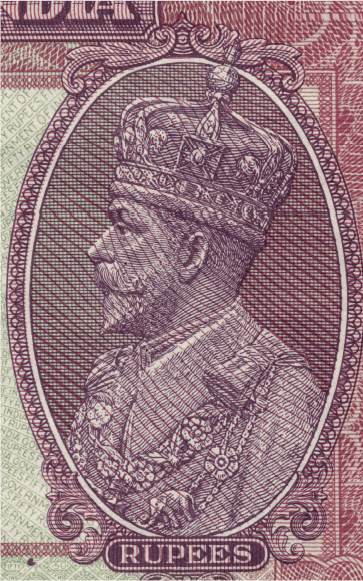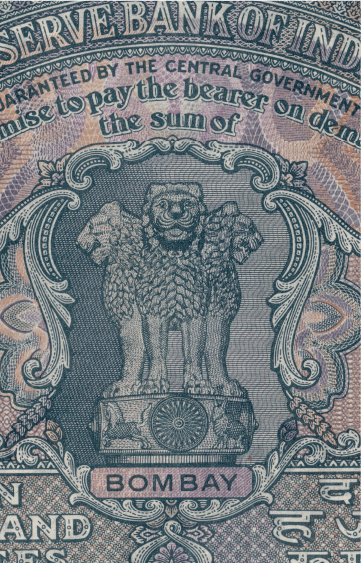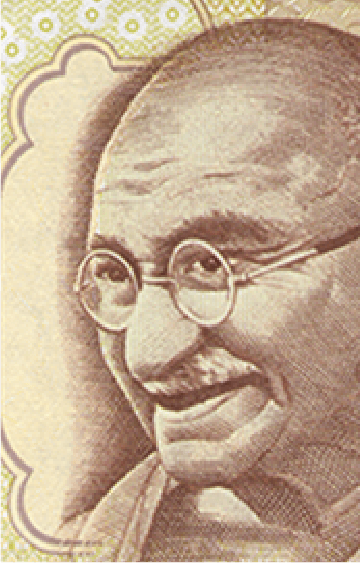The Evolution of Indian Money
Witness the transformation of Indian currency from cowrie shells to metal coins, and from paper notes to modern-day digital money.
-

Primitive Money
circa 1500 BCE
Cowrie shells, found abundantly in the Indian Ocean, were among the earliest forms of currency used in the world. In India, they were colloquially referred to as kaudi. Like cowrie, seeds and beads were also used as a medium of exchange. The red-and-black seed ratti, of the gunja (Abrusprecatorius) plant, was used as a unit of measurement
-

Early Period
circa 700 BCE - 500 CE
Different symbols were punched on the metal (usually silver and copper), thus giving them the name Punch-marked Coins. These were first issued in the Mahajanapada Kingdoms of the Indian Iron Age. The Kushan Empire (circa 100 BCE–300 CE) began minting gold coins, which featured religious deities. The Gupta Period (320 CE–470 CE) produced some of the most beautiful gold coins, benchmarks of artistic excellence and metallurgical prowess.
-

Mughal Period
1526 CE - 1857 CE
From 1526 CE, the Mughals consolidated the monetary system for the entire empire. Sher Shah Suri defeated the Mughal Emperor Humayun and founded the Suri dynasty. During his five year rule (1540 CE–1545 CE), Sher Shah issued a 178 gm silver coin, known as the Rupiya, the precursor of the modern-day Rupee. The silver coins on display were issued by various Mughal rulers. The gold coin belongs to the Mughal Emperor Aurangzeb and is from the Khujista Buniyad Mint, Berar (present-day Maharashtra)
-

British Era
circa 1853 CE
The issuance of a uniform coinage in India was brought only in the early 19th century when the British enacted the Coinage Act of 1835. The newly-designed coins saw the traditional Indian images and symbols replaced with the effigy of King William IV, which was itself replaced by the portrait of Queen Victoria from 1840 CE onwards. It was only after the Revolt of 1857 that the British declared the Rupee as the official currency of colonial India. During World War I (1914–1919), Rupee 1 coins made of silver were in use. However, due to the crisis following the War, Rupee 1 coins could not be generated. Hence, for the very first time, Rupee 1 notes were introduced in 1917. Finally, after the establishment of the Reserve Bank of India in 1935, the Government of India was empowered with the issuance of Indian currency notes. The very first paper currency that the RBI issued in 1938 was a Rupee 5 note, which had a portrait of King George VI.
-

Post-Independence Era
1947 to Present
The paper currency of independent India is defined by the symbol of the Lion Capital at Sarnath, depicting four Asiatic lions for power, courage, pride and confidence seated on a circular abacus. The first banknote that was printed in India post-independence was a Rupee 1 note. The high-denomination notes of Rs. 1000, Rs. 5000 and Rs. 10000 were demonetised in 1978. The Reserve Bank of India first printed currency notes with the image of Mahatma Gandhi in 1987. After the demonetisation in November 2016, the Rs. 500 notes were replaced with new banknotes of the same value, and Rs. 1000 notes were discontinued. The new banknotes of Rs. 200 and Rs. 2000 were introduced by the Reserve Bank of India.
-

Into the Future
HSBC was the first bank to set up an Automated Teller Machine (ATM) in India and it did so in Mumbai in 1987. Computerisation entered the banking industry for the first time in 1988, followed by Internet Banking in the 1990s. However, it was in the 21st century that online payment modes such as RTGS and NEFT came into play. The country surges ahead on the path of a ‘cashless economy’. With the advent of digital wallets like Paytm, PayU, UPI, etc. transferring money has become quicker and easier. Digital payments are also evolving at a rapid pace with the advent of cryptocurrency. Since these are a highly secure and decentralised form of money, currencies like Monero and Bitcoin are gaining popularity worldwide.